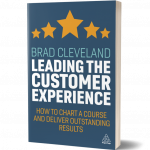I once had a chance to meet and talk with the late W. Edwards Deming. Dr. Deming was one of the world’s preeminent quality gurus, and author of the bellwether book, Out of the Crisis. This was years ago, and I was young and eager to learn. He lamented the fear he found among employees in many organizations. (One of Deming’s famous 14 points for total quality management was to “drive out fear.”) I nodded in agreement, but I had little experience to relate to what he was saying. To be candid, it seemed a bit dramatic.
I’m not proud that it took me three decades to fully grasp what he was saying. Countless studies, focus groups and conversations later, I get it. Many employees see innovation as risky. Innovation is a cool word. But at its heart is change—doing things differently.
In some cases, it’s shot down subtly. Mention a new idea, and your manager might respond with a question: “Isn’t billing due in three days?” Or an unconvincing, “Sounds good, we’ll have to take a look.” A colleague might chuckle, “We’ve never done it THAT way.” In many cases, the organization’s top leadership is 100 percent behind innovation—but they are unaware of how it plays out with managers, supervisors and employees in the ranks.
Innovation, the late Peter Drucker points out in his landmark book, The Discipline of Innovation, is the “effort to create purposeful, focused change in an enterprise’s economic or social potential.” He adds that it’s different than other disciplines. You hire accountants for accounting, marketers for marketing, and lawyers for your legal department. But where are your innovators? Your employees! Innovation comes not from genius or exceptional talent, Drucker says, but from a “conscious, purposeful search for innovative opportunities.”
Innovation comes not from genius or exceptional talent, Drucker says, but from a “conscious, purposeful search for innovative opportunities.”
So how can you encourage universal participation in innovation? Here are some recommendations that apply to any organization:
- Identify and remove barriers to innovation. This first recommendation is overarching and ongoing: find and remove (as possible) barriers that are getting in the way of innovation. Common barriers include no time, not sure what to do with an idea, nothing happened with past ideas, and spending time and focus in this way could jeopardize other performance objectives.
- Ensure managers see it and track it. You need an environment where new ideas are shared during team meetings, coaching sessions, and informal discussions (as well as through formal channels). You’ll need managers to advocate for employees’ great ideas, and coach them through the process. The goal is to see innovation become an inherent part of the employee journey.
- Establish an effective process for capturing, analyzing and implementing ideas. Without a thoughtful approach, ideas will get lost, become separated from the contributor, or blocked from going further. Should that happen, employees will for a time ask, “What happened to my idea?” They’ll then quickly give up: “Why bother?” On the other hand, where employees see ideas firing everywhere, they understand innovation isn’t just a “program.” It’s a critical and expected part of the culture.
- Tie recognition to strategic opportunities. If new product innovation is the key to revising an aging product line, be sure to make that connection when acknowledging those contributions. If customer service innovation is a strategic focus, recognize employees who contribute ideas that impact the service channels. Of course, don’t limit the generation of ideas across any area. But concentrate brainpower in critical areas and communicate priorities through recognition.
- Tie innovation contributions to the impact they have on customers. As you capture and tell stories, include the germination of ideas, details about the employees who developed them, and (as possible) examples of customers impacted by the idea.
Innovative organizations work at it. They make innovation a priority. They make removing fear and barriers a priority. If you say you value innovation, employees will notice whether products and services are fresh and evolving. They’ll look at practices and processes. They’ll pick up on what gets recognized at town halls and team meetings. Are you focusing primarily on productivity targets or the numbers “the street” (investors) is looking for this quarter? Or is innovation getting the attention it deserves?
Excerpt from Leading the Customer Experience: How to Chart a Course and Deliver Outstanding Results by Brad Cleveland.

